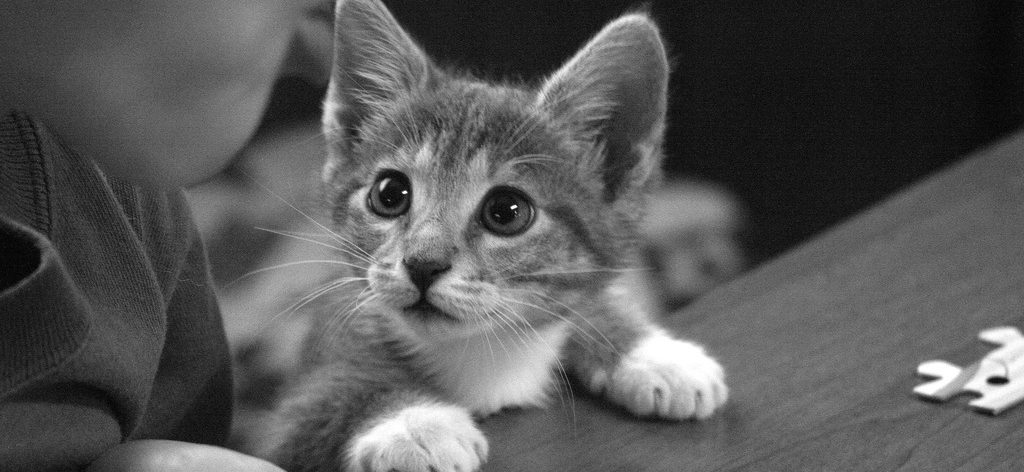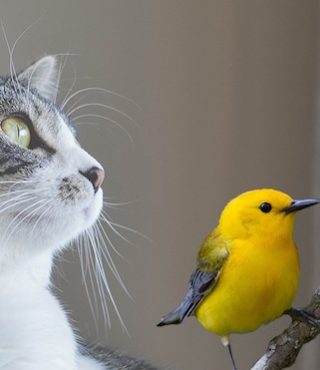Think Like a Cat!

As a cat behaviourist, my job involves fielding calls from people who want to change a behaviour in their cat that they dislike, or find difficult. They want their cat to fit seamlessly into a human world. Part of my role is to help the person understand what is going on from the cat’s perspective. I teach my clients to think like a cat!
Scratching
A common call I get is, “My cat is scratching the furniture; how do I get my cat to stop scratching?”
In this case, the first thing I need to do is explain that we actually want a cat to scratch. Scratching is important to a cat. Not only does it slough off the dead sheaths from a cat’s nails, but there is an emotional component to scratching. It releases pent-up tension and anxiety, and it can be a way to displace frustration, such as after a visit to the vet or the groomer. So, we want our cats to scratch – just not on the furniture or the carpet.
Deterrents
When people use deterrents, here is another time when they are not thinking like a cat. A deterrent can be part of behavior modification, but again, the cat needs to scratch. When a deterrent is used to discourage scratching in a certain area, you have to provide a more appealing alternative for your cat. A scratching post that is at least three feet tall, sturdy, rope or sisal covered and in a preferred location would be an excellent option.
Litter Boxes
Litter box issues present another opportunity to teach clients to think like a cat. As people, we care about privacy when we go to the bathroom. However, it is counterproductive to place those human preferences for privacy on your cat. Litter boxes that are covered, in remote locations of the house, wedged underneath or behind things or placed in the basement are likely to result in litter box problems. Your cat is not modest! In fact, your cat would prefer the litter box to be uncovered and in location that provides clear, clean sightlines to the surrounding area. Think like a cat: cats feel vulnerable in their litter boxes, so being able to see around them is important.
Laser Pointers
Do you use a laser pointer to play? Are you amused by your cat going crazy? Here is another time that you may not be thinking like a cat. Cats find laser toys frustrating, and their use causes anxiety and tension. An important rule in playing with your cat is allowing for success. For the play to be beneficial and fun, the cat needs to be able to capture the toy. The game is not about how long you can keep the toy away from the cat. From the cat’s perspective, the game is about simulating a hunt and being rewarded with a successful capture. The cat needs to be able to successfully grab the toy in her mouth or paws.
Roaming Outdoors
Last, I want to share with you that it is a myth that cats love being outside. In fact, many find the experience very stressful. Cats are territorial and when they are left to roam outside, they realize that there are lots of other cats out there who might want to go on their territory. When you let your cat roam outside, unsupervised (i.e. not on a harness or catio) he has a need to monitor the situation, assess the dangers, protect his home and let other cats, some of whom may be tougher than he is, know that he is there to hold his ground. There is a lot of anxiety around encountering another cat or other rival or predatory animal.
There is a method to retraining your cat to stay indoors. Think like a cat: if you make the indoors as interesting as the outdoors, your cat will have everything he needs while staying safe and secure.
The first thing is vertical space. Cats can jump up to 5 times their height and vertical space comes naturally to them. Look around at your rooms and walls, I bet there is some vertical space that is going unused. With minor modifications, you can actually double or triple the size of his territory. A little increase in vertical space will go a long way in making the indoor environment more appealing. One of the easiest ways to increase vertical space is with a cat tree and with window perches. If the cat tree is high enough, you can even put a walkway or some added shelving on a wall.
To fully maximize your environmental appeal, your cat will want some places where he can become invisible or navigate through a room “incognito.” Cozy hideaways and tunnels are good options for this.
Make sure your scratching posts are at least 3 feet tall and sisal or rope-covered to better simulate trees.
Stimulation is very important, and you need to provide hunting opportunities and stimulating activities. Add interest to mealtimes with puzzle feeders, hide small bowls of dry food around the house, grow some kitty grass, even your television can be a source of stimulation for your cat! Boxes are great, next time you get a delivery, cut a few holes in the box so your cat can hide in there, or toss in a ball or toy for your cat to swat around.
Learn to think like a cat, and you and your cat will be happier!
By Rachel Geller, Ed.D.
For more information on environmental enrichment for cats, click here.








